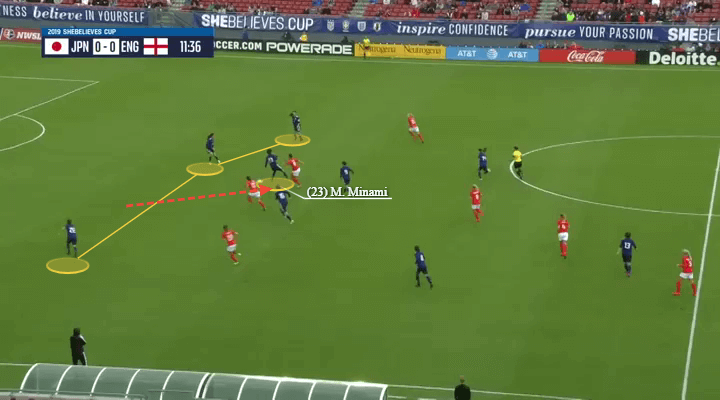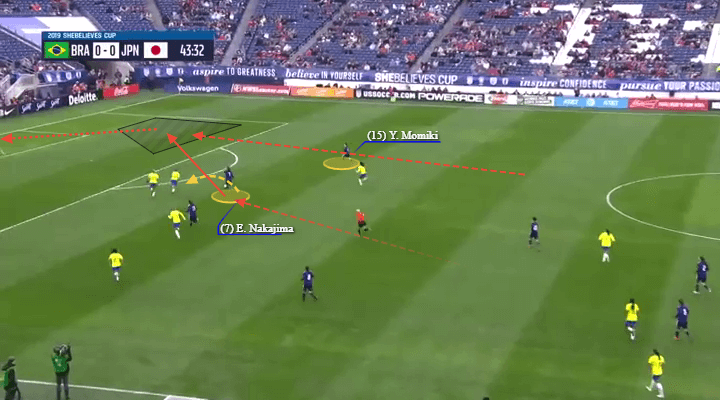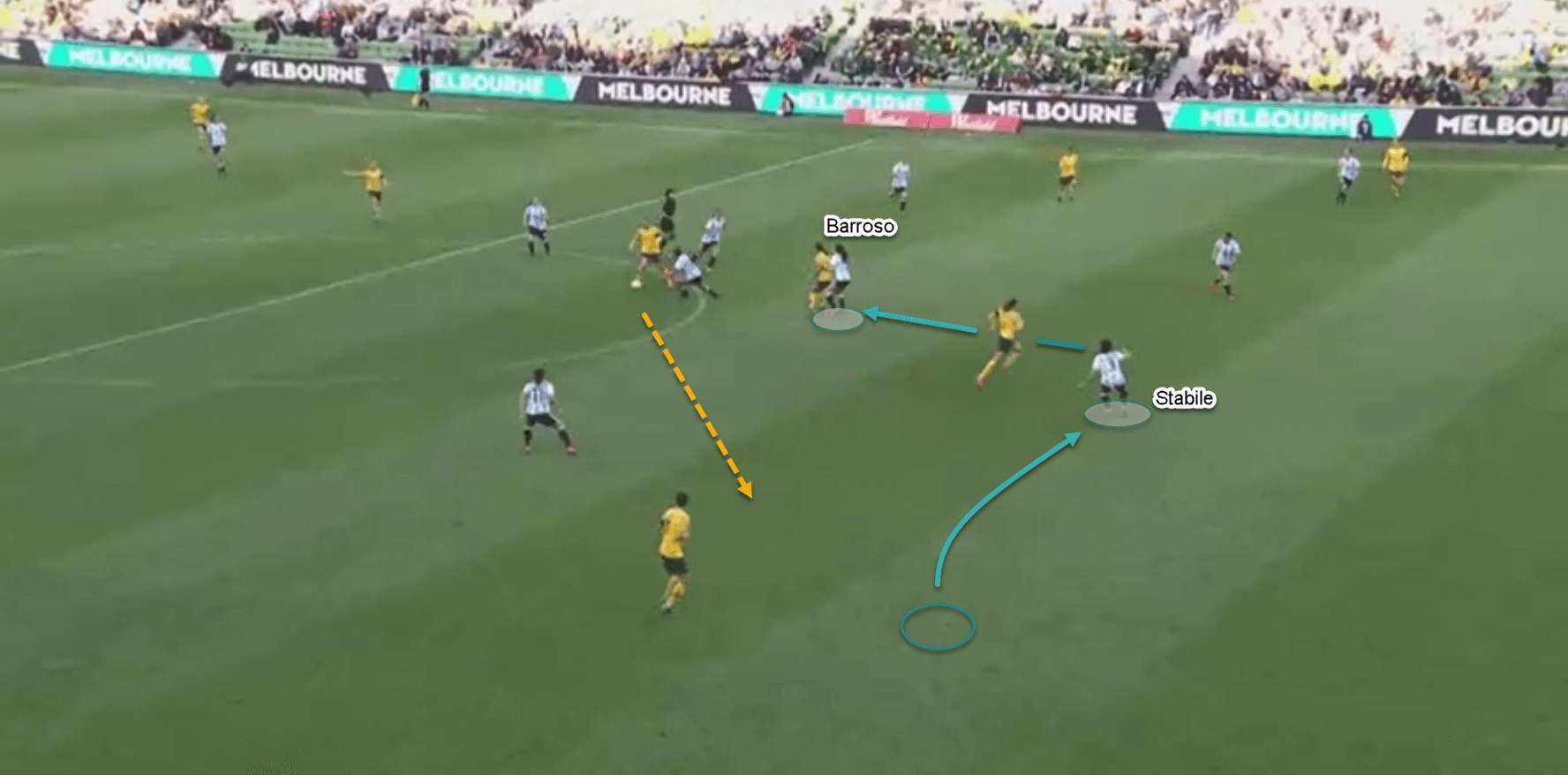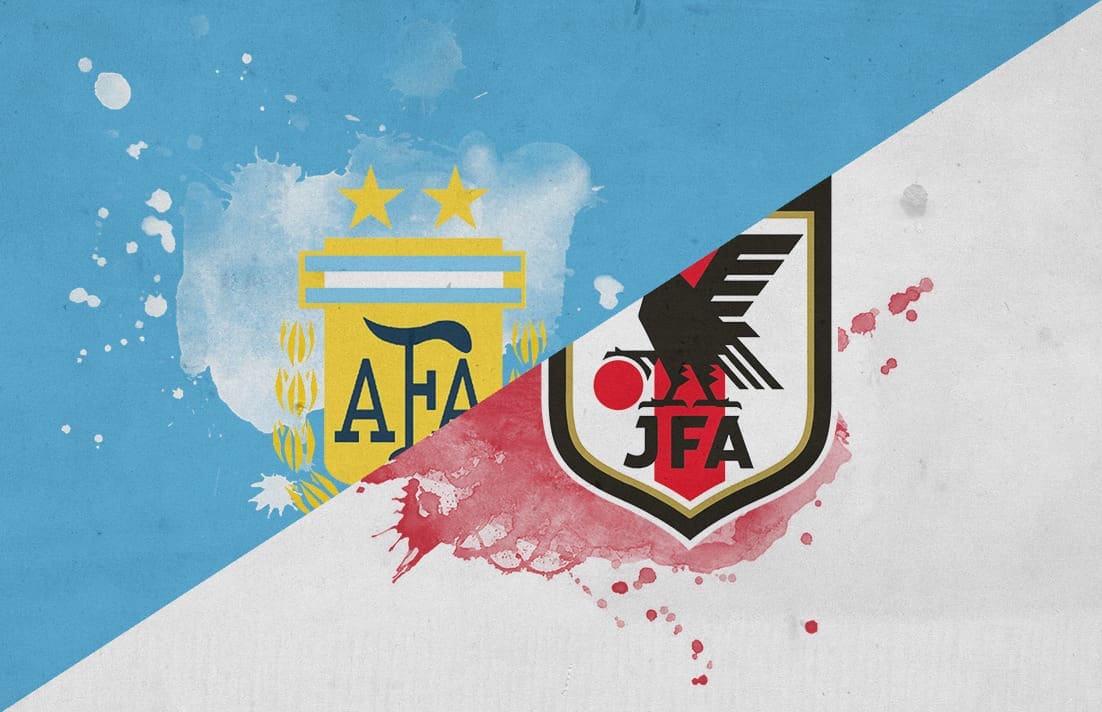After England got the three points against Scotland (2-1) in the first game from Group D of the FIFA Women’s World Cup, it’s time for Argentina and Japan to meet and fight for the top spot in the group.
Both teams have completely opposite styles of play. It will be interesting to see if they change their ways in order to fit the opposition tactical approach.
The ex-world champions Nadeshiko Japan seem like favourites in this game, having the required experience on a big stage and more tactically mature than their opponent.
Argentina coach Carlos Borrello could not rely on lots of players with technical skills but has managed to adapt their strengths into an effective game plan by mostly using the 4-2-3-1 formation.
On the other side, Asako Takakura’s Japan have successfully built a team with strong individualities that managed to cooperate perfectly on the pitch moving around the 4-3-3 and 4-4-2 formations.
In this tactical analysis preview, we will see why Nadeshiko Japan are in a better position and how could Argentina take advantage of their expectedly limited chances.
High press and versatility
The first noticeable difference in the team’s styles of play is their high press. Argentina applies a high press with the striker Soledad Jaimes. Having in mind that Japan tend to play out from the back. The South-Americans might need to change their strategy in order to be able to stop their attacks. If they want to use the almost non-existent press smartly they need to appoint a constant second player as support.
This could turn out successful as Japan’s defensive structure would often break by the opposition players’ dragging them out of position and forcing them into individual mistakes. Combined with the team allowing play in their own half, this might be Argentina’s chance to counter-attack.

Argentina’s usually defend in a mid-block which might cause them trouble as Japan are very active in the midfield area. They might try to overload the central zones and use their pace to perform short pass combinations for distributing the ball further. Argentina’s midfield might need to take more defensive responsibilities and help with the man-marking, although dropping back is not typical for them.
Due to their defensive strategy, Argentina are vulnerable to long balls from the defence. This could be perfect for Japan as they may have the right players to expose this weakness. Saki Kumagai could be the perfect choice as the central defender as she is the leader needed in defence to steer Japan to a clean sheet but to also help with the build-up or long balls.
When building up smoothly from the back Japan would force Argentina into defending deep. Their back-line tends to stay compact in these situations and the best way for the Asians to exploit them is by using the wide areas. Part of their strategy is actively using the full-backs as supporting functions in attack. Argentina needs to make sure they cover them tightly. However, this might not be enough to defend the goal, as Nadeshiko’s fluidity in attack is impressive and changing the direction of the attack could totally destroy Argentina’s efforts.

Positional awareness and on the ball actions
Japan’s attacking players are engaged with defensive actions too. They tend to press high and use players like Sakaguchi, Momiki, and Hasegawa for stopping their opponents in the early stages of the attack.
This would force the opposition into individual mistakes, as Argentina are not stable enough on the ball and give away possession easily. If Japan’s attacking players manage to put enough pressure on the goalkeeper and the back line, they might use their instability, retain possession and counter.
The South-Americans don’t usually build-up from the back and will try sending long balls to the midfield. That is in order to avoid vertical passing lanes as their decision-making on the ball is not their strongest attribute.
Unlike Japan, whose midfielders have split their responsibilities, Argentina’s double pivot in the central area often doesn’t have any support from behind which causes lots of space between the lines. This is an immediate alert as the aforementioned Japanese players are the main creative source and tend to use a lot of through balls for exploiting spaces.

In their efforts to close the passing lanes Argentina often leave their positions without any of the players taking responsibility for covering depth. That is double trouble for the team, as Nadeshiko’s players would often cut inside and overload these areas.
Japan should be careful with Argentina’s quick attacks as their main player Jaimes might catch them unprepared. Losing possession would make them vulnerable. Their task would be keeping her off the ball as much as they can. This might turn out to be difficult as she is the team’s physically strongest player and wins her duels. However, as it happens while pressing the back line, Jaimes could find herself alone in the final third with no option for a pass. That is something that could hardly happen to Japan, as confirmed even the coach Borrello.
“They are a technically gifted team, very fast, very tidy,” Argentine coach Carlos Borrello told a press conference in Paris on Sunday. “The most important thing about Japan is the speed, the change of rhythm and the permanent movement of all the players,” he said. “The player with the ball always has passing options.”

Conclusion
This tactical analysis has portrayed Nadeshiko Japan’s tendency to play possession football, using mainly short passes for keeping the ball in the advanced areas. This would be hard for Argentina to oppose. Their only chance to meet their high-speed style is by Banini being in the pivot role for the team. She needs to find the balance between dropping back as extra defensive support and going forward as support to Jaimes.
It’s hard to predict Japan’s constantly changing starting XI, but using Hasegawa seems like a must in this game. She might turn out as the most valuable player not only because of her ball control and attacking flair but also because of her defensive contribution.
The high expectations and hopes for Argentina lay on Jaimes’ shoulders. Her movement should not be underestimated and if not tightly covered it would surely result in the team scoring.
If you are following the FIFA Women’s World Cup 2019 then you will find our FREE tactical preview magazine the perfect compliment to the tournament. You can download it HERE – each nation is previewed and we also profile their key player and young player to watch. Enjoy!





Comments